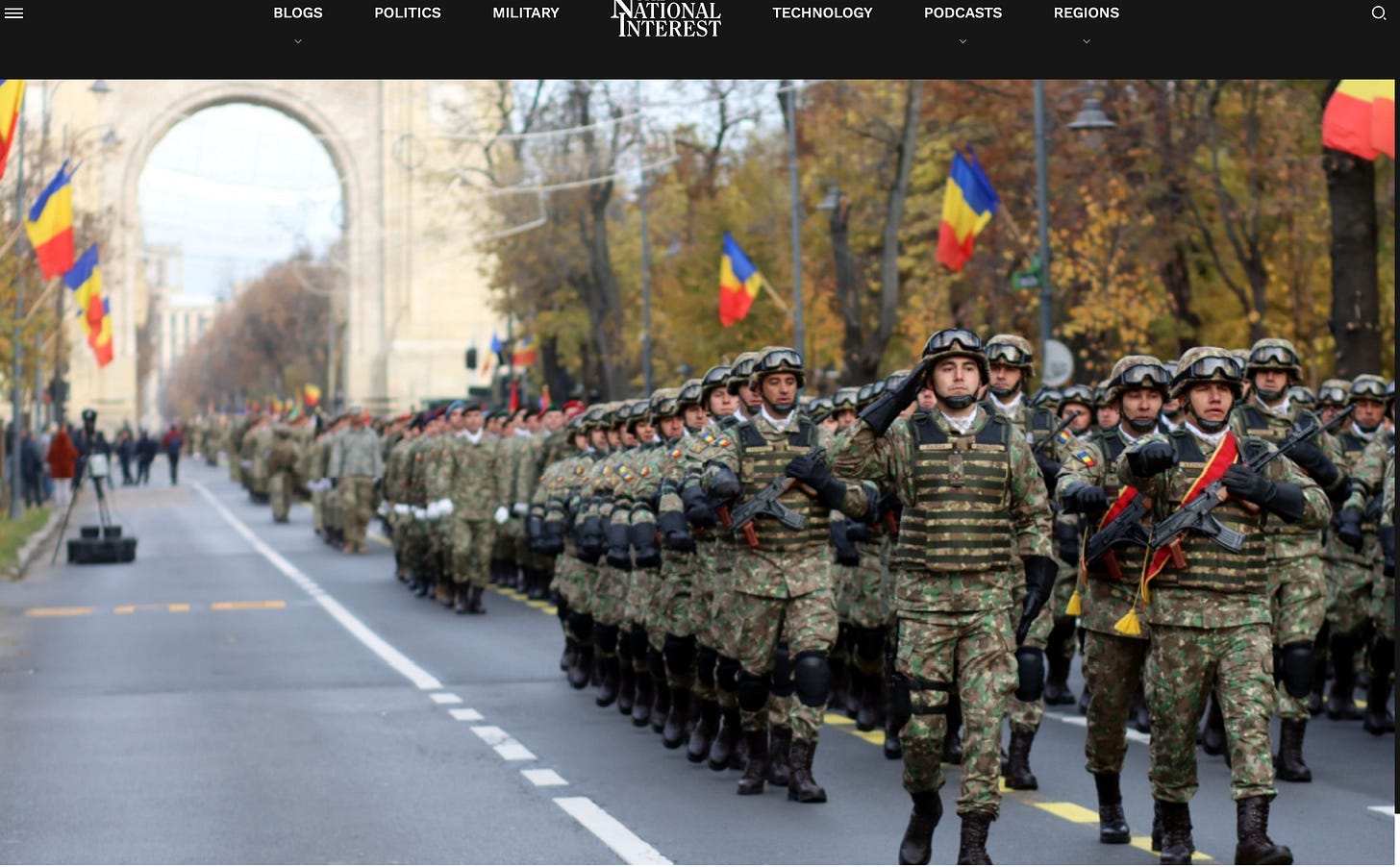👉 The National Interest
Romania Holds the Key to Ukraine Peacekeeping
August 29, 2025
By: Philip Breedlove, and Glen E. Howard
..Bucharest is willing to lend its critical military infrastructure to any post-war peacekeeping effort in Ukraine.
US support for a European-led peacekeeping mission in Ukraine is essential to securing any future peace agreement between Moscow and Kyiv. As US-led talks enter a period of uncertainty, President Donald Trump has signaled that he may step back from diplomatic efforts due to frustration with the lack of progress between Moscow and Kyiv. While President Trump has ruled out putting American peacekeepers “on the ground” in Ukraine, he emphasized last week that the United States could still provide vital support by air and add logistics capabilities no European ally can match.
Meanwhile, the US military is working with European planners to shape American air support for a proposed 6,000–10,000-strong peacekeeping force, while Secretary of State and National Security Advisor Marco Rubio is coordinating with Ukrainian officials on plans to finalize US security guarantees for Ukraine. European leaders are coalescing around plans for a British- and French-led force, involving as many as ten nations, under the Multinational Force Ukraine framework. The coalition would provide logistics, weapons expertise, and training to help rebuild Ukraine’s ground forces after a peace deal.
These plans, however, face a hard reality: Europe cannot mount such an operation without US airpower in the Black Sea. Washington’s role could range from deploying warplanes and air-defense systems to providing intelligence and drones. At a minimum, America’s heavy-lift cargo fleet would be essential for moving troops and equipment, alongside possible air-defense and intelligence support as a backstop to those peacekeeping operations.
If Europe, backed by the United States, moves forward, one thing is clear: America must rely on its NATO ally, Romania, as a backstop to ensure peacekeeping in Ukraine is a success. Romanian prime minister Ilie Bolojan has stated that while Bucharest rules out sending troops into Ukraine, his country is prepared to offer its military infrastructure—including NATO-operated air bases—for the use of allied forces as Romania’s contribution to securing peace.
One of Romania’s most important assets is the Mihail Kogălniceanu (MK) Air Base, one of the largest in Eastern Europe. Often referred to as the “Ramstein of the East,” in reference to the US airbase in Germany that has anchored NATO operations since 1953, MK is strategically located near Constanța on the Black Sea and is ideally positioned to support US-backed peacekeeping operations in Ukraine. Equipped for 24/7 operations, its 11,000-foot runway can accommodate any aircraft in the US Air Force inventory, including the C-17 Globemaster III, C-5 Galaxy, and heavy tankers such as the KC-135 and KC-46.
MK Air Base has played a central role in US and coalition operations for over two decades. During the run-up to the Iraq war in 2003, the base was used as a staging and transit hub for troops and equipment moving in and out of the Middle East. Tens of thousands of American soldiers passed through MK on their way to Kuwait and Iraq, and it later became a primary transit hub for US forces rotating in and out of Iraq and Afghanistan. Given its strategic location—with proximity to the Middle East and direct access to the Black Sea—the United States made it a key NATO facility even before Romania formally joined the alliance in 2004.
Romania has been a pivotal American ally in Eastern Europe, leveraging its access to the Black Sea to stabilize the region and deter Russian aggression. At the recent NATO Summit in The Hague, Romania pledged to increase its defense spending to 5 percent of GDP by 2035, having already met the 2 percent benchmark set during President Trump’s first administration.
Beyond spending, Romania has made major investments in US defense systems. It signed a $4 billion deal in 2017 to purchase seven Patriot batteries—recently donating one to Ukraine—and is moving forward with a $6.5 billion acquisition of 32 F-35A jets, its largest-ever procurement. By 2030, Romania will begin to operate a modern fleet of F-35s, making its air force one of the most advanced in the region.
While Europe and the United States formulate a framework for peacekeeping in Ukraine, Romania’s role will be indispensable. Without its airbases, infrastructure, and political resolve, the logistical foundation of any coalition mission would be severely weakened. Peacekeeping will test US and European commitments—and NATO’s ability to project stability on its eastern flank. As a potential backstop to those operations, Romania’s “Ramstein of the East” holds the key to making a European-led peacekeeping mission in Ukraine a success.
👉 Click here to read the original article in The National Interest.
About the Authors: Glen Howard and Philip Breedlove
Glen E. Howard is the President of The Saratoga Foundation.
Philip M. Breedlove is the former Supreme Allied Commander Europe (SACEUR) and a member of the board of Saratoga.
Image: Christian Alexandru / Shutterstock.com.'
Thank you for your support! Please remember that The Saratoga Foundation is a non profit 501(c)(3) organization. Your donations are fully tax-deductible. If you seek to support The Saratoga Foundation you can make a one-time donation by clicking on the PayPal link below! Alternatively, you can also choose to subscribe on our website to support our work.
https://www.paypal.com/donate/?hosted_button_id=XFCZDX6YVTVKA

